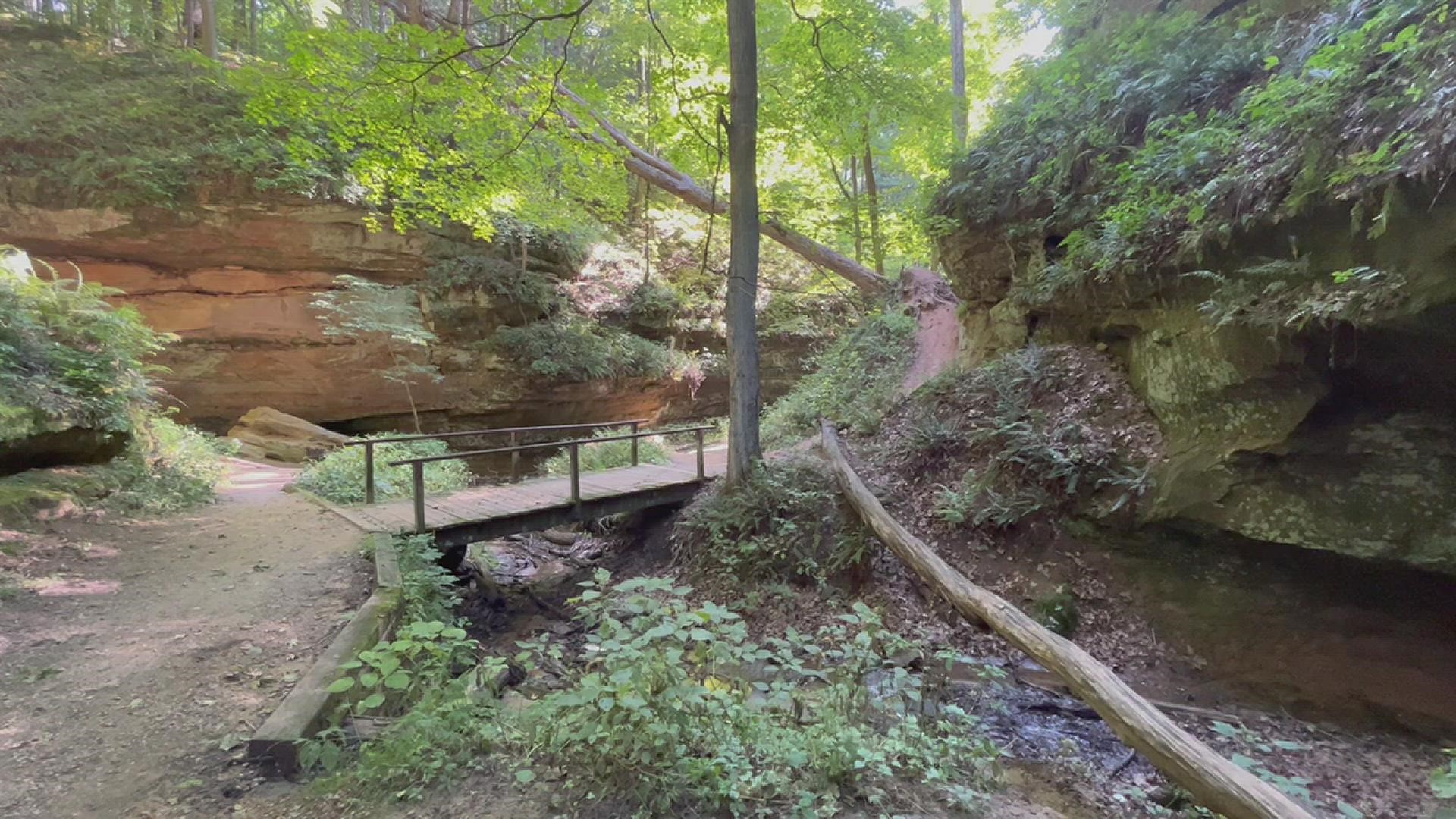MUSCATINE, Iowa — Wildcat Den State Park in rural Muscatine, Iowa has distinct highlights to visit like towering geological features and a historic mill alongside a scenic creek.
The park was founded in 1928 by sisters Emma and Clara Brandt. They donated the original 80 acres, which has now grown to 420 acres.
“It wasn't until 1936 that the park became officially dedicated. That was when the bronze tablet was erected by the state,” Karri Rutenbeck, Natural Resources Technician 1 with the Iowa Department of Natural Resources, said.
In that same year of 1928, the state of Iowa acquired the Pine Creek Grist Mill, which was built by Benjamin Nye, the first European settler of current Muscatine County.
A grist mill is a mill for grinding grain, used by early area farmers to ground their corn into flour.
The grist mill was acquired by the state by eminent domain, which is the right of a government to take away private property for public use, with compensation.
“Without the state's intervention, the grist mill wouldn't be standing today, so it was a good time for the state to intervene before the grist mill became too far in disrepair,” Rutenbeck said.
Pine Creek Grist Mill is the oldest working grist mill between the Mississippi River and the Rocky Mountains.
A group called The Friends of Pine Creek Grist Mill was founded in 1995 and it maintains the structure and opens it for seasonal tours.
"They took on a huge initiative to get the grist mill up and running. When they first started in 1995, the grist mill was not open to the public, none of the machinery worked. They put a lot of initiative into grants and their own time, just to get it into working condition again," Rutenbeck said.
The grist mill is one of the most accessible parts of the state park, with A.D.A. approved sidewalks that lead up to the mill.
A bridge built in the 1870s crosses over Pine Creek.
“It was used as a way for the local settlers to get across the creek. Otherwise, they would have to travel for miles around to find a place to wade the creek,” Rutenbeck said.
The bridge closed to vehicular traffic more than 100 years later, in the 1980s.
Wildcat Den got its name after a young boy’s report of a bobcat attack on his pony.
"The story goes [that] there was a boy who was driving cattle through this area on his pony. He was coming through the area and he said a catamount (large cat species native to the Americas) jumped on the back of the pony, and him and the pony went tumbling down the trail," Rutenbeck said.
Bobcats are still in the area but are shy and timid, so you’re unlikely to see them.
There are ample bird-watching opportunities to see unique birds like pileated woodpeckers and belted kingfishers.
A wide variety of ferns and pollinator gardens attract bees and monarchs.
The park features unique geological formations of carved out sandstone: Specifically, it’s 300-million-year-old exposed sandstone.
The Devil’s Punch Bowl was created by a waterfall that carved out a large area in the bluff.
“The iron deposits in the sandstone kind of give everything a reddish hint, which is how it got the nickname Devil's Punch Bowl,” Rutenbeck said.
This medium-difficulty trail has some stairs to reach the main area but the views at the bottom are worth the hike!
A spot in the park called the Lower Picnic Area also features more exposed sandstone.
The trails there take hikers past features such as ‘Steamboat Rock’ and ‘Fat Man’s Squeeze.’ Although that latter feature is a second version of the original...
"There also used to be what was called Fat Man's Squeeze. In 2002, that rock formation actually fell off the side of the bluff... That (other) trenched area kind of became Fat Man's Squeeze after that," Rutenbeck explained.
The trails throughout the park vary in difficulty.
No rock climbing or rappelling is allowed due to the fragility of the sandstone.
There are 28 primitive campground sites available within the park and two open air shelters that are available to rent.
The Iowa DNR works to preserve the natural and historical beauty for future generations to enjoy Wildcat Den.
“It's a really unique area for Iowa, you're typically not going to see 40-foot sandstone bluffs in the middle of a cornfield. Which is why Emma and Clara took the time to make sure this is preserved for future generations because it is such a unique area for Iowa," Rutenbeck said.
If you're only going to have a limited amount of time here, "make sure you check out the lower picnic area trail and the Punch Bowl. It's the most scenic areas of the park. Also make sure to get down to the grist mill," Rutenbeck said.

